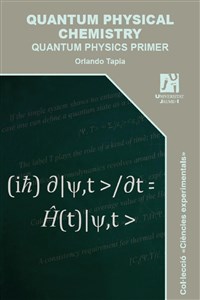

L'estat quàntic és un concepte clau que juga un paper central en l'estudi de fenòmens en física, química, bioquímica, química de materials, biologia, etc. L'obra, catalogada com a "Quantum Physics Primer", tracta de construir i desenvolupar aquest concepte. Orlando Tapia Olivares, cubà de naixement, però resident a Suècia, ha preparat aquests fonaments innovadors expressament per a aquesta edició.